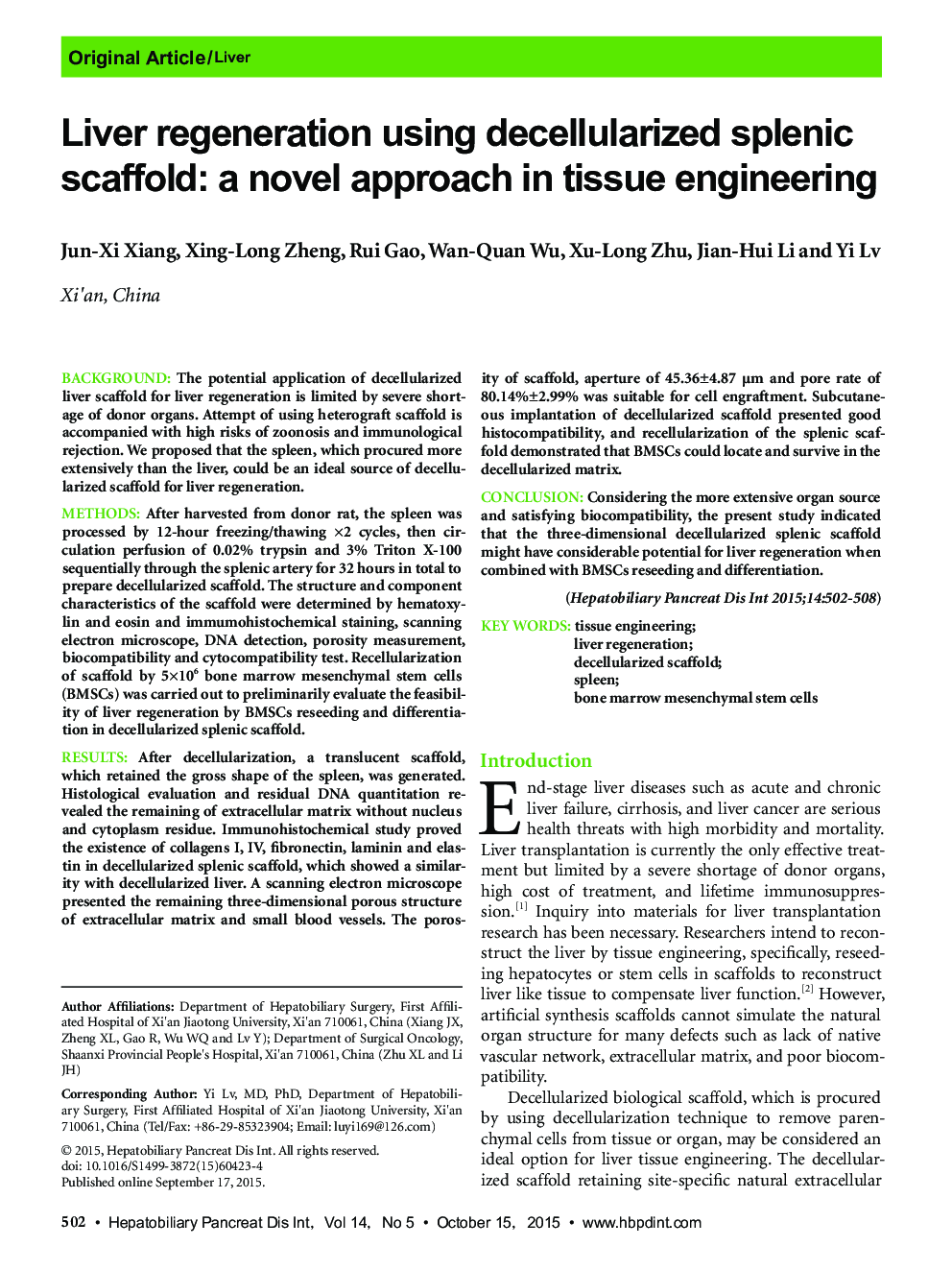| کد مقاله | کد نشریه | سال انتشار | مقاله انگلیسی | نسخه تمام متن |
|---|---|---|---|---|
| 3337401 | 1213798 | 2015 | 7 صفحه PDF | دانلود رایگان |
BackgroundThe potential application of decellularized liver scaffold for liver regeneration is limited by severe shortage of donor organs. Attempt of using heterograft scaffold is accompanied with high risks of zoonosis and immunological rejection. We proposed that the spleen, which procured more extensively than the liver, could be an ideal source of decellularized scaffold for liver regeneration.MethodsAfter harvested from donor rat, the spleen was processed by 12-hour freezing/thawing ×2 cycles, then circulation perfusion of 0.02% trypsin and 3% Triton X-100 sequentially through the splenic artery for 32 hours in total to prepare decellularized scaffold. The structure and component characteristics of the scaffold were determined by hematoxylin and eosin and immumohistochemical staining, scanning electron microscope, DNA detection, porosity measurement, biocompatibility and cytocompatibility test. Recellularization of scaffold by 5×106 bone marrow mesenchymal stem cells (BMSCs) was carried out to preliminarily evaluate the feasibility of liver regeneration by BMSCs reseeding and differentiation in decellularized splenic scaffold.ResultsAfter decellularization, a translucent scaffold, which retained the gross shape of the spleen, was generated. Histological evaluation and residual DNA quantitation revealed the remaining of extracellular matrix without nucleus and cytoplasm residue. Immunohistochemical study proved the existence of collagens I, IV, fibronectin, laminin and elastin in decellularized splenic scaffold, which showed a similarity with decellularized liver. A scanning electron microscope presented the remaining three-dimensional porous structure of extracellular matrix and small blood vessels. The porosity of scaffold, aperture of 45.36±4.87 µm and pore rate of 80.14%±2.99% was suitable for cell engraftment. Subcutaneous implantation of decellularized scaffold presented good histocompatibility, and recellularization of the splenic scaffold demonstrated that BMSCs could locate and survive in the decellularized matrix.ConclusionConsidering the more extensive organ source and satisfying biocompatibility, the present study indicated that the three-dimensional decellularized splenic scaffold might have considerable potential for liver regeneration when combined with BMSCs reseeding and differentiation.
Journal: Hepatobiliary & Pancreatic Diseases International - Volume 14, Issue 5, 15 October 2015, Pages 502-508
